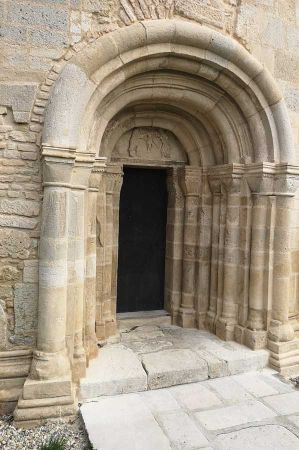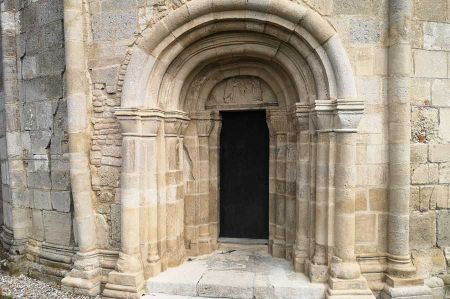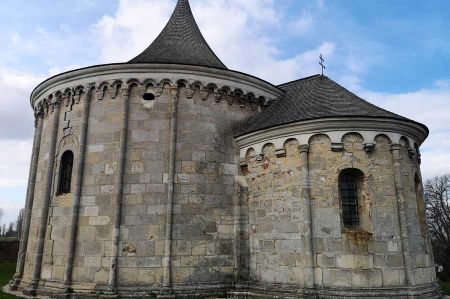Romanesque round chapel in Petronell-Carnuntum
- Written by Portal Editor
Our tour from the Roman amphitheatre to the so-called pagan gate through the ancient Roman city of Carnuntum was (almost) finished, so we wanted to explore the surrounding area as well.
A relatively well signposted path leads from the “Heidentor” to the small town of Petronell-Carnuntum. A little later we noticed that there should be another amphitheatre in the former Roman military camp. We followed the signs. We felt like the sidewalks raised when night fell, because there was no one on the street. The typical development of a street village awaited us, houses in almost only one row along the thoroughfare. When after a few kilometres there were no signs of the military camp, we turned back, somewhat disappointed. How to admit.
A round chapel of Roman origin in the town centre

The circular chapel was built on a circular floor plan in the first half of the 12th century. The builders and planners used the foundations of a previous building that was probably built in the second half of the 11th century. It was possibly the first parish church in Petronell-Carnuntum.

The chapel was badly damaged in the wars against the Ottomans and against the French, and the condition of the building deteriorated dramatically. The cracks in the masonry also assumed threatening dimensions despite several renovations. In the 1950s the building could be restored and thus saved from decay.
Romanesque architecture - extraordinary and very impressive
The base of the pilasters is in a continuous, profiled base and ends in the arched frieze under the eaves. The chapel is accessed via a Romanesque step gate with four half-columns with cube capitals. In the 16th century, a hexagonal gallery was opened inside, according to the description of the building. In the 17th century, a dummy dome was built in place of the original rib vault, which had been demolished in 1696. The cone roof dates from around 1700. The sculptures of St. Joachim and St. Anna were created around 1700.
We would also have liked to have a look at the interior, unfortunately the entrance was closed.
Please read as well:
From Vienna State Opera to Ephesus Museum at Hofburg
The Brunnenmarkt - an oriental street market in Ottakring
